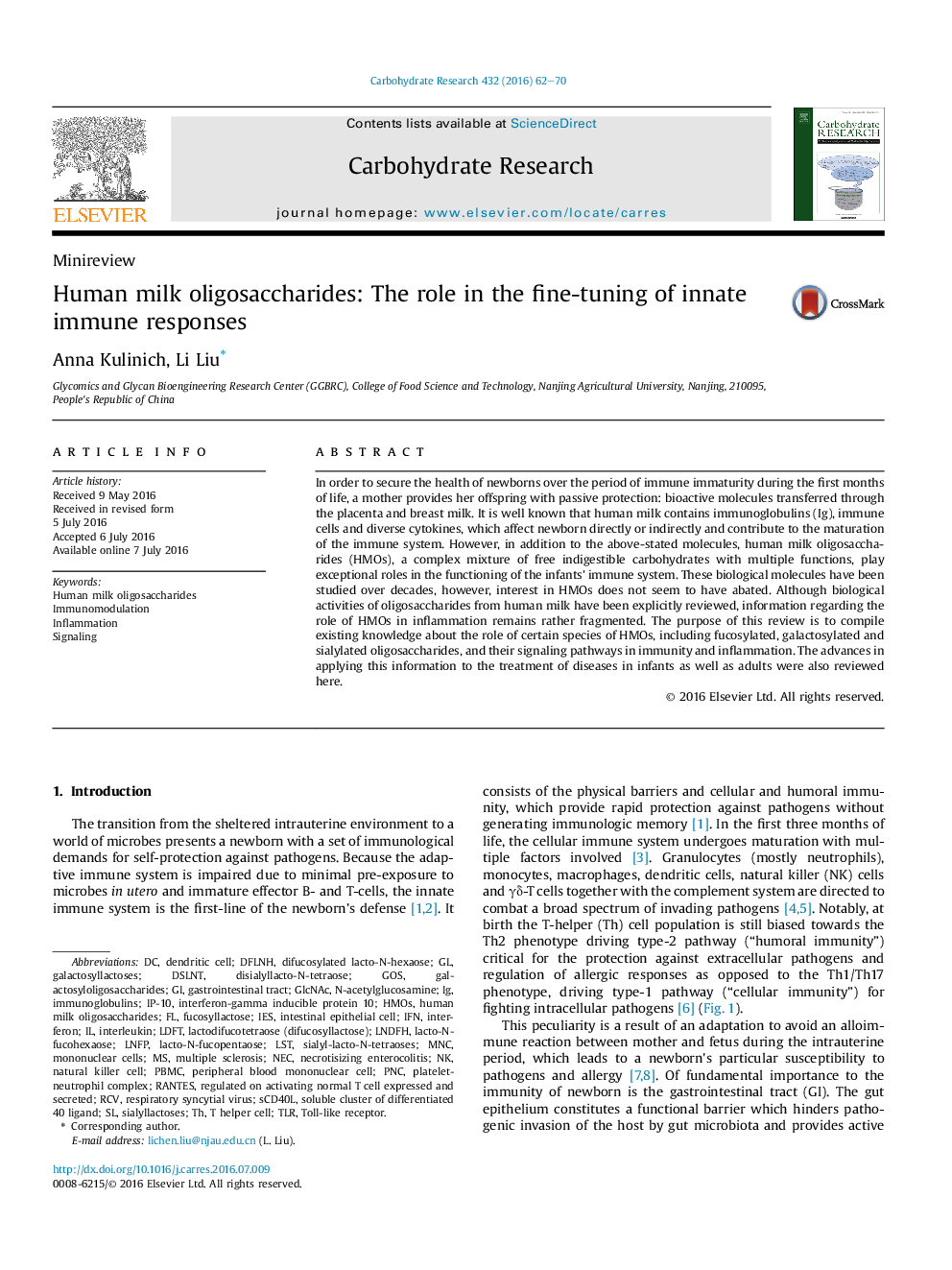| Article ID | Journal | Published Year | Pages | File Type |
|---|---|---|---|---|
| 1387688 | Carbohydrate Research | 2016 | 9 Pages |
In order to secure the health of newborns over the period of immune immaturity during the first months of life, a mother provides her offspring with passive protection: bioactive molecules transferred through the placenta and breast milk. It is well known that human milk contains immunoglobulins (Ig), immune cells and diverse cytokines, which affect newborn directly or indirectly and contribute to the maturation of the immune system. However, in addition to the above-stated molecules, human milk oligosaccharides (HMOs), a complex mixture of free indigestible carbohydrates with multiple functions, play exceptional roles in the functioning of the infants' immune system. These biological molecules have been studied over decades, however, interest in HMOs does not seem to have abated. Although biological activities of oligosaccharides from human milk have been explicitly reviewed, information regarding the role of HMOs in inflammation remains rather fragmented. The purpose of this review is to compile existing knowledge about the role of certain species of HMOs, including fucosylated, galactosylated and sialylated oligosaccharides, and their signaling pathways in immunity and inflammation. The advances in applying this information to the treatment of diseases in infants as well as adults were also reviewed here.
Graphical abstractFigure optionsDownload full-size imageDownload as PowerPoint slide
